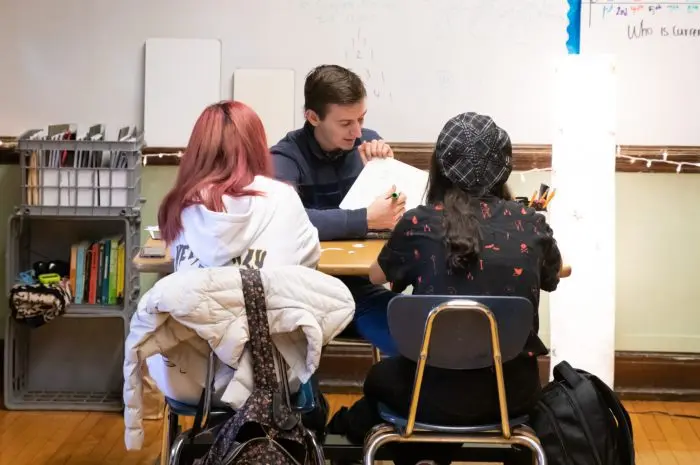Unlocking Student Interest: Proven Techniques to Ramp Up Engagement
Discover effective strategies to boost student engagement and interest, transforming classrooms into dynamic and interactive learning environments.
In the ever-evolving landscape of education, fostering student interest and engagement is crucial for effective learning.
Engaged students are more likely to perform better academically, retain information longer, and develop a lifelong love of learning. However, capturing and maintaining student interest can be challenging.
Here are proven techniques that educators can employ to ramp up engagement and create dynamic, interactive learning environments.
1. Incorporate Active Learning Strategies
Active learning involves students directly in the learning process, encouraging them to participate and engage with the material.
Techniques such as group discussions, hands-on activities, and problem-solving exercises can make learning more interactive and enjoyable.
For example, using case studies in science classes allows students to apply theoretical knowledge to real-world scenarios, making the content more relevant and interesting.
2. Use Technology to Enhance Learning
Integrating technology in the classroom can significantly boost student engagement. Interactive tools such as smartboards, educational apps, and online resources can make lessons more dynamic.
Gamification, where educational content is presented in game-like formats, can also motivate students to participate.
Platforms like Kahoot! and Quizlet turn learning into a fun and competitive activity, encouraging students to actively engage with the material.
3. Connect Learning to Real-World Applications
Students are more likely to be interested in what they are learning if they can see its relevance to their lives and future careers. Teachers can draw connections between the curriculum and real-world applications by using examples from everyday life, current events, or professional practices.
Inviting guest speakers from various industries or organizing field trips can also provide students with a practical understanding of how their learning applies outside the classroom.
4. Foster a Collaborative Learning Environment
Collaboration encourages students to engage with each other and the material actively. Group projects, peer reviews, and cooperative learning activities promote teamwork and communication skills.
When students work together, they can share ideas, challenge each other’s thinking, and build a sense of community within the classroom. This collaborative environment can make learning more enjoyable and engaging for everyone involved.
5. Personalize Learning Experiences
Personalized learning tailors education to meet the individual needs, interests, and abilities of each student. By providing choices in assignments, reading materials, or project topics, teachers can allow students to explore subjects they are passionate about.
This approach can help students take ownership of their learning and stay motivated. Using data-driven insights to identify areas where students excel or struggle can also help in creating customized learning plans.
6. Implement Inquiry-Based Learning
Inquiry-based learning encourages students to ask questions, investigate, and discover answers for themselves.
This student-centered approach fosters curiosity and critical thinking. Teachers can facilitate inquiry-based learning by posing open-ended questions, guiding research projects, and encouraging students to explore topics deeply.
This method not only engages students but also helps them develop essential problem-solving skills.
7. Encourage Student Autonomy
Giving students a sense of control over their learning can significantly increase their engagement. Allowing students to set their own goals, choose project topics, or decide on the format of their presentations can make them feel more invested in their education.
Autonomy in learning helps students develop self-regulation and decision-making skills, fostering a more active and engaged learning process.
8. Create a Positive and Inclusive Classroom Environment
A positive and inclusive classroom environment is essential for student engagement. Teachers should strive to create a safe space where all students feel valued and respected.
Encouraging diverse perspectives and promoting inclusivity can make all students feel more comfortable participating.
Celebrating successes, providing constructive feedback, and building strong teacher-student relationships can also enhance the overall learning experience.
9. Utilize Formative Assessments
Formative assessments provide ongoing feedback that can help students understand their progress and identify areas for improvement.
Techniques such as quizzes, polls, and reflection journals can be used to gauge student understanding and keep them engaged.
These https://www.publicedcenter.org assessments can inform instructional adjustments, ensuring that teaching methods meet the needs of all students and keep them actively involved in their learning journey.
10. Integrate Creative and Arts-Based Activities
Incorporating creative and arts-based activities into the curriculum can make learning more engaging and enjoyable.
Activities such as drawing, music, drama, and creative writing allow students to express themselves and explore their creativity.
These activities can also help students develop a deeper understanding of the subject matter by encouraging them to think outside the box and make connections between different concepts.
Conclusion
Engaging students and sparking their interest is a multifaceted challenge that requires a variety of strategies.
By incorporating active learning, leveraging technology, connecting lessons to real-world applications, fostering collaboration, personalizing learning, encouraging inquiry, promoting autonomy, creating a positive environment, utilizing formative assessments, and integrating creative activities, educators can create dynamic and interactive classrooms.
These techniques not only enhance student engagement but also contribute to a richer and more effective learning experience.
As education continues to evolve, these strategies will be essential in preparing students for the complexities of the modern world.

